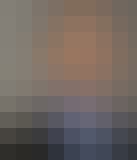Crowdfunding, the practice of raising small amounts of money from large numbers of people, has enabled people around the world to start new businesses, fund initiatives, and raise money for themselves and others. Yet, not all crowdfunding efforts reach their desired goal. Why do some succeed, while others fail? This course will reveal the science behind successful crowdfunding, drawing on data from hundreds of thousands of campaigns. You’ll learn different types of crowdfunding approaches, and receive detailed advice on what to do (and what not to do) when crowdfunding. You’ll also have the unique opportunity to go behind-the-scenes with key players in the field with exclusive interviews from the founder of Indiegogo to successful campaign creators, to get the information you need to set your crowdfunding initiative up for success.
Interview with Zach Dunham

Skills You'll Learn
Cost–Benefit Analysis, Planning, Advertising Campaign, Crowdfunding
Reviews
4.6 (392 ratings)
- 5 stars68.11%
- 4 stars23.21%
- 3 stars6.88%
- 2 stars1.27%
- 1 star0.51%
DB
Oct 16, 2020
Comprehensive, objective, well-researched, well-organized and clearly presented; effective integration of interviews that presented various facets of crowdfunding. Super helpful!
RC
Jan 23, 2020
Excelent course. I learned a lot. I expect to apply this knowledge and help NGO´s in Costa Rica about Crowdfunding. Thank very much for this opportunity.
From the lesson
Module 4
In this module, you’ll examine some of the science behind crowdfunding, including how crowds think, and how fraud and failure is spotted. By looking at examples of studies done on collective thinking and decision-making, you’ll learn about Linus’ Law and how the crowd exerts rational criteria when determining which campaigns are fraudulent or worthy of support. You’ll gain a better understanding of your backers and better leverage their influence to bring success to your own campaign. You’ll explore who is successful in crowdfunding campaigns, and the experience of women to see the value of sharing common ground with your backers. By the end of this module, you’ll have a deeper understanding of the components for success in crowdfunding campaigns, and be able to leverage them to successfully fund your startup or other ventures.
Taught By

Ethan Mollick
Associate Professor
